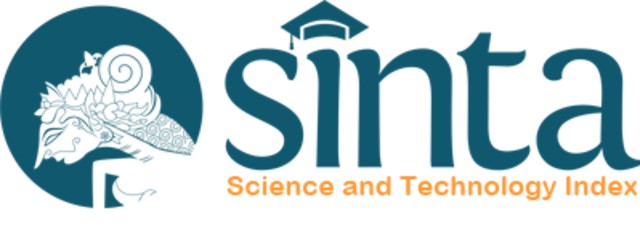Strategy Design for Vendor Held Stock with Consignment Model to Gain Competitive Advantage
Abstract
Vendor Held Stock is a supply chain optimization strategy commonly adopted for oil and gas commodities and renewable energy. Vendor Held Stock is developing the Vendor Managed Inventory concept on the Consignment Model, where vendors provide additional storage and inventory management services, procurement, and delivery. PT IMC is a company operating in the field of energy supply, implementing Vendor Held Stock scheme with a Consignment Arrangement. This study aims to design a priority strategy for optimizing the Vendor Held Stock scheme to increase the company's added value in its market expansion efforts. Interviews and questionnaires were conducted on divisions directly involved in the High-Speed Diesel Bio Solar distribution operations, such as the Operations and Commercial Division and the Cargo Distribution Center Division. Strategy design is carried out by identifying the company's internal and external environment by analyzing Strengths, Weaknesses, Opportunities, and Threats, preceded by the Internal Factor Evaluation Matrix, the External Factor Evaluation Matrix, and the External Internal Matrix. Priority strategy is determined using the Quantitative Strategic Planning Matrix. The strategy with the highest Total Attractiveness Score was chosen as a proportionality strategy where "Changing the status from an Agent to a General Trading Permit to get more competitive price" obtained the highest total attractiveness score with a score of 7,2478. Focusing on the strategy is expected to increase company competitiveness globally
Downloads
References
Battini, D, A. Grassi, A. Persona & F. Sgarbossa. 2010. Consignment Stock Inventory Policy: Methodological Framework and Model. International Journal of Production Research, 48(7): 2055–2079.
https://doi.org/https://dx.doi.org/10.1080/00207540802570669
Suhermanto, B. 2018. Peranan Sistem Vendor Held Stock (VHS) Dalam Menunjang Pengendalian Internal Persediaan PT. Pertamina Patra Niaga Surabaya.
Chadiq, U. 2015. Customer Relationship Management (CRM): Pilihan Strategi Untuk Meraih Keunggulan Bersaing. Dharma Ekonomi: 18(33).
https://ejurnal.stiedharmaputra-smg.ac.id/index.php/DE/article/view/161/137
David, D., & A.N. Sinaga. 2016. Analisis SWOT Dalam Menentukan Strategi Perusahaan (Studi Kasus CV. King Toy’s). Kurs: Jurnal Akuntansi, Kewirausahaan Dan Bisnis, 1(1): 1–13. https://www.ejournal.pelitaindonesia.ac.id/ojs32/index.php/KURS/article/view/278
Fadhil, M. 2019. Perbaikan Strategi Pemasaran Pada CV. Elastico7 Menggunakan Analisis SWOT Dan Quantitative Strategic Planning Matrix (QSPM) Fakultas Teknik. Universitas Islam Bandung.
Fokali, C., & H. Siagian. 2021. The Impact of Lean Manufacturing on Operational Performance Through Vendor-Managed Inventory And Supply Chain Practices. Journal Of Contemporary Issues in Business and Government: 27(2).
https://doi.org/10.47750/cibg.2021.27.02.542
Heryanto, C.A.W., C.S.F. Korangbuku, M.I.A. Djeen, A. Widayati. 2019. Pengembangan Dan Validasi Kuesioner Untuk Mengukur Penggunaan Internet Dan Media Sosial Dalam Pelayanan Kefarmasian. J. Farmasi Klinik Indonesia, 18(3): 175-187.
https://doi.org/https://doi.org/10.15416/ijcp.2019.8.3.175
Ishak, A., & S.K. Parinduri. 2019. Supplier Selection Using Analytical Hierarchy Process (AHP) and Technique for Order Preference by Similarity to Ideal Solution (TOPSIS ). 1st International Conference on Engineering and Management in Industrial System (ICOEMIS 2019), 173(Icoemis): 321-328.
https://doi.org/https://doi.org/10.2991/icoemis-19.2019.44
Kuma, C.F.D., T. Lasalewo, A. Rasyid. 2023. Strategi Pengembangan Bisnis Dalam Upaya Peningkatan Penjualan Produk Heo Lubricant di PT. Bina Pertiwi dengan Analisis SWOT dan QSPM. Jambura: Jurnal Ilmiah Manajemen Dan Bisnis, 6(1): 269-278. https://ejurnal.ung.ac.id/index.php/JIMB/article/view/19385/6359
Lakra, P., & Bedi, P. 2014. The Comparative Study of Consignment and Vendor Managed Inventory with Special Reference of Cost Structure. International Journal of Advancements in Research & Technology: 3(3): 142-146. https://www.academia.edu/6808836/The_comparative_study_of_consignment_and_vendor_managed_inventory_with_special_reference_of_cost_structure
Mahfud, T., & Y. Mulyani. 2017. Aplikasi Metode QSPM (Quantitative Strategic Planning Matrix)(Studi Kasus: Strategi Peningkatan Mutu Lulusan Program Studi Tata Boga. Jurnal Sosial Humaniora Dan Pendidikan, 1(1): 66-76. https://jurnal.poltekba.ac.id/index.php/jsh/article/view/240/179
Martono, R.V. 2018. Studi Kasus Penerapan Vendor Managed Inventory Pada Sistem Rantai Pasok. Jurnal Manajemen Industri Dan Logistik, 2(1): 28-39.
https://doi.org/10.30988/jmil.v2i1.63
Nuraini, S., & M.S. Purwanegara. 2020. Business Strategy For Longgar Outfit As A New Fashion Brand. Tourism And Sustainable Development Review, 1(1): 14-24. https://doi.org/10.31098/tsdr
Nurairin, D.A., & Y. Orgianus. 2022. Perbaikan Strategi Pengembangan Perusahaan Dengan Metode Quantitative Strategic Planning Matrix (QSPM). Jurnal Riset Teknik Industri, 2(2): 161-170.
https://doi.org/https://doi.org/10.29313/jrti.v2i2.1335
Pramudhita, K.B., & S. Santoso. 2022. Analysis Of Fuel Oil Supply Chain Risk Management At Jatinegara Locomotive Depo. Jurnal Rekayasa Mesin, 13(1): 141-151.
Rizal, M.A., & S.M. Hana. 2019. Strategi Pengembangan Bisnis Angkutan Kereta Api Kontainer di PT Kereta Api Logistik Menggunakan Metode SWOT dan QSPM. Jurnal Logistik Bisnis, 9(02): 39-47. https://doi.org/https://doi.org/10.46369/logistik.v9i02.575
Soeherman, A.D.G. 2022. Performance Competitive Advantage and Review on the Factors in the Company Cooperation. Budapest International Research and Critics Institute-Journal (BIRCI-Journal), 5(3).
https://doi.org/https://doi.org/10.33258/birci.v5i3.6085
Suraraksa, J., & K.S. Shin. 2019. Comparative analysis of factors for supplier selection and monitoring: The case of the automotive industry in Thailand. Sustainability (Switzer-land). https://doi.org/10.3390/su11040981
Susanthi, P.R. 2017. Analisis Lingkungan Internal Dan Eksternal Dalam Mencapai Tujuan Perusahaan (Studi Kasus STIE Galileo Batam). Jurnal Elektronik, 1(1): 30-42. https://media.neliti.com/media/publications/231646-analisis-lingkungan-internal-dan-ekstern-98db8c0f.pdf
Vigtil, A. 2008. A Framework For Modelling Of Vendor Managed Inventory. Department of Production and Quality Engineering, Norwegian University of Science and Technology.
Wahyuni, S., Suparno, I. Vanany. 2020. The Proposed Model of Suppliers Performance Measurement for Vendor Held Stock (VHS) in Mining Industry. Iptek Journal of Proceeding Series, 6(6): 399-406.
https://doi.org/http://dx.doi.org/10.12962/j23546026.y2020i6.11129
Wangchen Bhutia, P. 2012. Application of AHP and TOPSIS Method for Supplier Selection Problem. IOSR Journal of Engineering, 2(10), 43–45. https://doi.org/10.9790/3021-021034350
Widiyarini, W., & Z.F. Hunusalela. 2019. Perencanaan Strategi Pemasaran Menggunakan Analisis SWOT Dan QSPM Dalam Upaya Peningkatan Penjualan T Primavista Solusi. Jabe (Journal Of Applied Business And Economic, 5(4): 384–397. https://doi.org/http://dx.doi.org/10.30998/jabe.v5i4.4186















